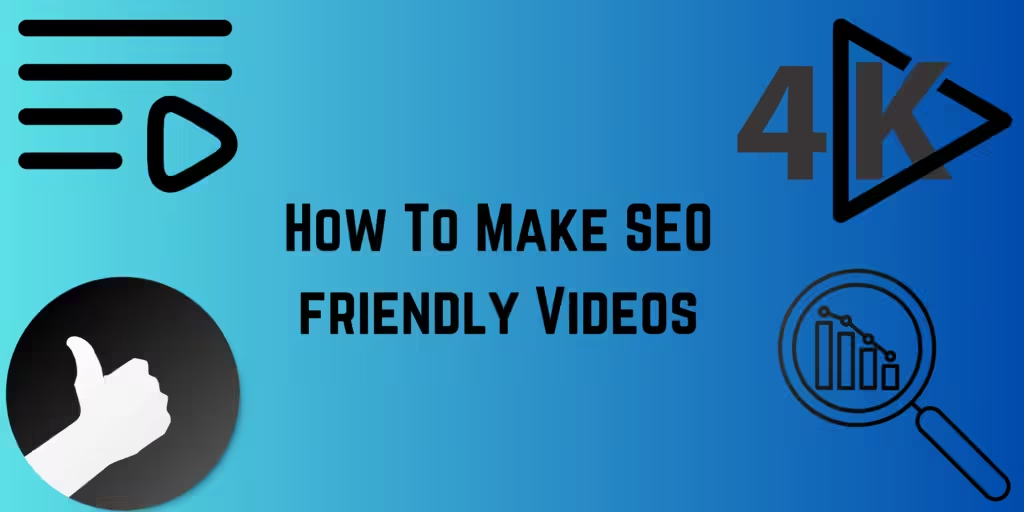SEO strategies are increasingly being employed by brands to be at the top of search engine rankings. The same applies to video platforms as people consume multiple videos every day. Reaching the top of the ranks and distinguishing your content from others can, thus, seem like a difficult task.
This is where video SEO comes in. You can optimize your videos as per the algorithm to help them reach the intended audience. There are some key SEO elements you need to know about to optimize the visibility of your videos. Check out this guide to learn how to make SEO-friendly videos.
Contents
What is Video SEO?
Video SEO is simply making changes to your videos so that they are indexed and ranked on search engine result pages for relevant keywords. It optimizes your videos to ensure a wider reach and a higher chance of ranking.
Is YouTube Good for SEO?
You might be unsure whether SEO really works for YouTube since search engines can’t exactly watch video content. However, note that they can crawl the text component of YouTube videos such as closed captions, transcripts, tags, descriptions, and titles.
Incorporating SEO strategies such as using relevant keywords and phrases into the text components is useful for videos on YouTube.
How Do You Do SEO on Videos?
Conducting Keyword Research
Using relevant keywords is essential for making SEO-friendly videos. They are used by search engines to identify the video’s subject, index the content, and associate it with user searches. You can add these keywords to the title, tags, and description so that they are picked up and used for ranking.
It is, therefore, important to identify which keywords work the best for your video.
Choosing the Keywords
To optimize your video for SEO, you need to know which keywords to use and which to avoid. The best choice is to go for long tail keywords that don’t have high traffic but don’t have high competition either. It’s easier to gain a good position by targeting relevant long tail keywords.
Do remember to use only relevant ones so that the viewer does not abandon your video after just a few seconds.
Creating a Title
As we discussed before, one of the places your keyword needs to appear in is the title. It is an important factor that determines the ranking and reach of your video. Make sure that the title is as close as possible to the user’s search terms.
You should also try to keep the title concise and relevant. It needs to describe what the viewers want to watch while also making them curious enough to click on the video.
Adding Tags
Tags are essential for ranking a video on platforms like YouTube. They are used to identify the subject of a video and index it correctly. Relevant tags are also helpful in recommending related videos. Those suggestions are important sources of traffic and, hence, it is important to wisely add tags to the video.
It is advisable to use not more than 6 to 8 words, so as not to confuse the algorithm.
Writing Descriptions
Another important field to keep in mind while crafting an SEO-optimized video is the description. It provides information about the video in the most descriptive way possible. You can use up to 5000 characters to write a long and detailed description.
The description’s initial portion appears in the search results, so it is crucial to keep the main information at the beginning of the text. Additionally, it helps the platform’s algorithm to identify the topics covered in the video.
You can include calls to action(CTAs) in the description and add timestamps that direct the viewer to the prominent parts of the video.
Creating Transcriptions and Captions
Search engines can only read text and code, not videos and images. Therefore, an important SEO strategy to improve the ranking of your video is to use transcriptions and captions.
Transcription involves turning into text the video’s subject. You can also add timestamps to the transcription to turn it into captions. This helps users follow the video even if they cannot turn on the audio and acts as an accessibility tool for people with hearing impairment.
Creating Thumbnails
The video thumbnail is often what attracts the viewer’s attention. It plays a significant role in determining whether people click on your video or not. The thumbnail, therefore, needs to be relevant and compelling.
You should take the time to create and upload custom thumbnails if your account is verified. Choose something that conveys the topic of your video and helps you stand out from the crowd.
Categorizing Videos
You need to tell video platforms like Vimeo and Youtube as much information as you can about your video, so they can recommend it to the right people. YouTube, for example, organizes millions of videos into broad categories with common topics like gaming, animals, music, and sports.
It is crucial that you give out the right information about your video so that it is placed in an appropriate category.
Creating Playlists
Creating a playlist of related videos is a great SEO strategy for your channel. Organizing uploads in a coherent way makes it easier for viewers to binge-watch your content. You can organized your playlists theme-wise and use strategic keywords in titles, descriptions, and videos.
Utilizing End Screens and YouTube Cards
Give out clear calls to action(CTAs) in your videos to help ease decision fatigue for the viewer. You can also utilize end screens and YouTube cards to make your channel more interactive and encourage the viewer to explore other videos and links.
Channel Art and Logo
Creating a visually appealing logo and channel art doesn’t directly affect video SEO but does help to increase the reach of your video. A strong brand identity is important to stand out online. Distinctive visuals pique the viewers’ interest and help them recognize you easily on future visits.
Choose colors and designs that fit your brand identity and accurately convey the impression that you want to make on your audience.
Making High-Retention Videos
Always remember that dwell time is incredibly important for any type of SEO. Your page appears more valuable to the algorithm and ranks higher in search engines if people spend a long time on it.
Audience retention is an important thing for video SEO and you need to optimize your videos according to that. It is not about having expensive cameras or flawless production but creating content that is relevant, concise, engaging, and delivers some value to the viewer.
You should keep the introduction brief and dive quickly into the main content to retain the attention of the viewer.
Monitoring Analytics
Now, you need to gauge whether your strategy to make your videos SEO-friendly is working or not. This helps you figure out what’s working and identify areas where you can make improvements.
YouTube has an in-built analytics function you can utilize for this. Watch Time tells you the overall number of minutes a viewer spends with your content. Impressions CTR and Card CTR help you know which people check out your video after seeing it on the homepage.
Sections like Subscriber Growth let you know how your subscriber count has changed in terms of location, time period, and individual videos.
To learn more check out our free guide where we have listed everything you need to know to get started with video editing





